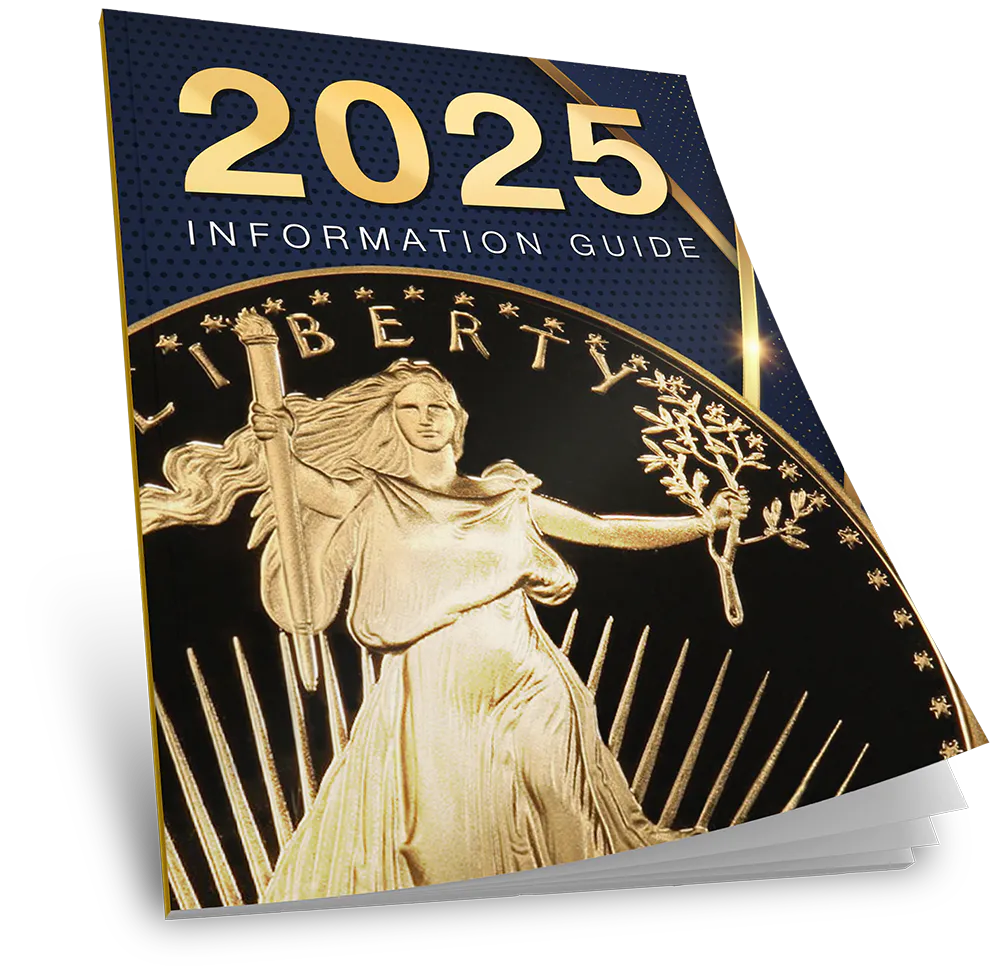Tariffs and Gold
Gold prices have surged to new all-time highs as trade tensions escalate, and the U.S. prepares to impose tariffs on its major trading partners. The U.S. is set to impose 25% tariffs on goods from Canada and Mexico, its two largest trading partners, and a 10% tariff on China. Tariffs are also proposed on the European Union (EU), which raises concerns about global economic stability.
Tariffs as a Tool for Economic Protection
The proposed tariffs aim to protect American industries. They also raise funds without raising domestic taxes. Tariffs increase the cost of imports, making foreign goods less competitive against domestic products. The increased costs are typically passed onto consumers, further incentivizing Americans to buy domestic products.
 1
1
During his campaign, President Trump stated, “We’re going to bring the companies back. We’re going to lower taxes for companies that are going to make their products in the USA. And we’re going to protect those companies with strong tariffs.” He also justified his decision by saying it was necessary to protect American citizens from “the major threat of illegal aliens and deadly drugs killing our Citizens, including fentanyl.”2
Gold’s Response to Growing Uncertainty
Gold prices reached $2,852 per ounce, marking a new all-time high. Economist David Goldberg noted, “Gold is 100% proportionally correlated with uncertainty. And this is the most uncertainty we’ve seen in a long time.” Goldberg continued, “(Owning) Gold is a no-brainer in this environment… (where) the only certainty is more uncertainty.”3
Gold prices retreated slightly after news that the tariff imposition on Mexico would be delayed by one month. Canada, Mexico, and China vowed retaliation with tariffs of their own. Canada proposed 25% tariffs on $155 billion worth of U.S. goods, and China promised to “take necessary countermeasures.”4
Amid these developments, traders have been moving large sums of money into gold as a hedge against economic turbulence. Fears of a gold tariff saw $82 billion of physical gold moved out of the Bank of England’s vaults. It was transferred to private vaults and the Comex exchange in New York.
Economic Impacts of Tariffs
Tariffs are seen as inflationary. Economists worry they may impact oil prices. Canada supplies 60% of the U.S.’s crude oil imports, and a tariff on oil could exacerbate inflationary pressures. A rise in inflation could delay interest rate cuts by the Federal Reserve. Fed Chairman Jerome Powell is expected to remain cautious, adjusting policies based on economic data as it unfolds.
There is also the risk that tariffs could slow global growth. Stagflation, low growth with high inflation, could result. A study by the Peterson Institute found that larger proposed tariff hikes could cost U.S. consumers an extra $2,600 a year. Walmart CEO Doug McMillon indicated that the retailer might raise prices in response to these tariffs.
The stock market has been volatile, reacting negatively to news of the tariffs. Traders fear a full-blown trade war could disrupt global supply chains, reignite inflation, and slow the economy. Stocks initially dropped, but rebounded after the U.S. and Mexico delayed the tariff increase by a month to allow for negotiations.
Market Reactions and Historical Context
Some economists believe that the current market turmoil is part of a broader process of creative destruction. A market correction could result in better valuations, as opposed to the current overvalued market. David Kostin is Chief U.S. Equity Strategist at Goldman Sachs. He explained that tariffs could negatively impact S&P 500 earnings. Kostin predicted that “the impact in aggregate between earnings and valuation would be approximately 5%.”5
In 2018, President Trump’s tariffs on steel, clothing, and wooden cabinets did boost domestic production. However, the S&P 500 fell by 7%, with a nearly 20% drop from mid-September high to its trough in December.
Future Outlook
Some traders remain hopeful that tariffs will not become permanent. Instead, seeing them as a negotiating tool in President Trump’s broader economic strategy. Felix Tintelnot is an Associate Professor of Economics at Duke University. He observed, “Generally, it will make it more costly to import goods. With the one caveat: it is conceivable that the foreign exporter could reduce its price in order to maintain competitiveness and not lose out.”6
Ideally, tariffs could protect American producers and consumers. If foreign companies cut prices to compensate for tariffs, prices would remain the same. Tax revenue would be created that can offset tax cuts, without adding to the debt.
Conclusion
President Trump has framed his tariff policies as a means to usher in the “golden age” of America, while acknowledging that there may be “some pain” along the way. “But it will all be worth the price that must be paid,” he said.7
No one knows what the future holds as the global economy is being transformed. In the face of uncertainty, it makes sense to insure the value of your retirement funds against inflation and market volatility. Holding physical precious metals in a Gold IRA can safeguard your future from economic turbulence until our Golden Age is realized. To learn more, contact us today at 800-462-0071.






